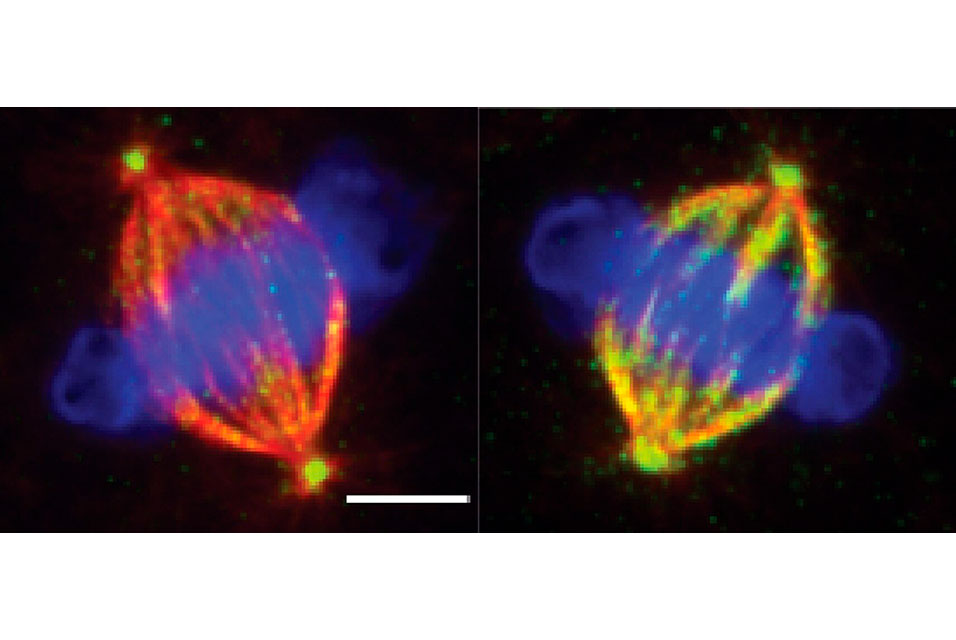BARCELONA.- To make new cells, we have to divide existing ones. This is a continuous, frequent and ubiquitous process which starts at conception and ends at death. There are an estimated 37 trillion cells in the tissues and organs of the human body, each of which originates from one cell dividing into two.
When cell division goes wrong, it can lead to the creation of new cells with an abnormal number of chromosomes, a phenomenon known as aneuploidy. The frequency at which chromosome segregation errors occur is known as chromosomal instability (CIN). In some cases, for example a developing embryo, this can promote spontaneous abortion and in others, it can contribute to human diseases such as cancer. Aneuploidy and CIN are hallmarks of particularly aggressive tumors.
Researchers study cell division to understand how chromosome segregation occurs without mistakes every time a cell divides. They also investigate why and how mistakes can occur and generate aneuploid cells.
Faithful chromosome segregation is fully dependent on the correct attachment of the chromosomes to the mitotic spindle, the molecular machinery that pulls chromosomes to opposite sides of a cell. The spindle is formed of microtubules, long-hollow tubes made from proteins. Microtubules must remain stable enough to move and align the chromosomes, but also dynamic enough to allow for correction of the erroneous attachments before chromosomes are pulled apart and segregated.
The dynamics of microtubules and how they are finely regulated are fundamental to understanding how cells divide. Their importance is underscored by the identification of a compound in the early 1970s that is still currently used in chemotherapy and directly stabilizes microtubules, causing cancer cells to self-destruct.
For ICREA Research Professor Isabelle Vernos, Group Leader in the Quantitative Cell Biology research program at the
Centre for Genomic Regulation, how microtubule dynamics is regulated during cell division in cancer is still not fully understood and could reveal new mechanisms to exploit. Her latest study, published last week in Nature Communications, reveals potential new viable therapeutic targets in cancer.
Microtubules undergo various modifications in different cell types and tissues that finely define their specific functions. In this work, the researchers identified tubulin tyrosine ligase like 11, also known as TTLL11, an enzyme that specifically modifies the spindle microtubules by adding glutamate chains to the surface of the microtubule. This is a process known as polyglutamylation,
They found that microtubule polyglutamylation defines the dynamism and stability of the spindle microtubules, which in turn secure the faithful segregation of the chromosomes. Time-lapse imaging revealed that without TTLL11, cells and zebrafish embryos were much more likely to undergo chromosome segregation errors.
When the researchers examined TTLL11 levels in cancer compared to healthy tissue using data from the Cancer Genome Atlas, a public database that includes molecular characteristics of more than 20,000 primary cancer matched with normal samples spanning 33 cancer types, they found that TTLL11 was significantly downregulated in every single one of these tumors compared to the corresponding normal tissue.
"We found that low levels of TTLL11 are highly specific to cancer. This is exciting because it reveals another layer to how microtubules are regulated during cell division in cancer. Drugs that interfere with microtubule dynamics are already one of the most successful first-line cancer therapies. If this turns out to be a viable therapeutic target, our findings pave the way to the creation of a new generation of drugs that are more precise and effective than conventional treatments," says Dr. Vernos.
The authors of the study also explained why low levels of TTLL11 affect cell division. "Microtubules need to establish stable connections with the chromosomes to align them and pull them apart, but these connections also need to be flexible enough to be corrected on time to avoid any errors during segregation. Microtubules in cancer cells have low levels of TTLL11, making them too stable thereby favoring the segregation of chromosomes in the presence of attachment errors that will result in aneuploid cells. It remains to be demonstrated whether this is a mechanism being exploited by cancer cells to grow and generate diversity through random chromosome segregation errors. This constitutes new exciting avenues of research," explains Dr. Vernos.










